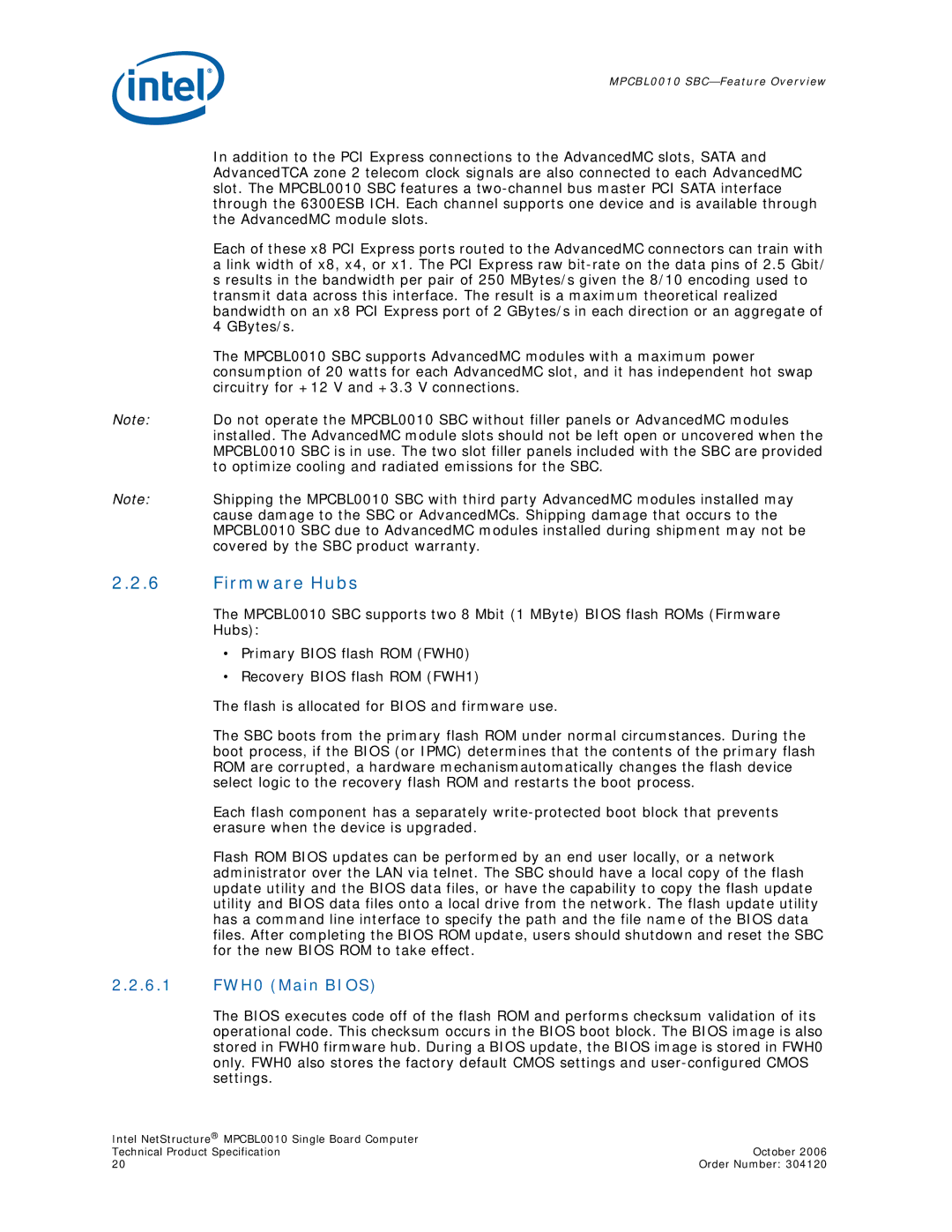
MPCBL0010 SBC—Feature Overview
In addition to the PCI Express connections to the AdvancedMC slots, SATA and AdvancedTCA zone 2 telecom clock signals are also connected to each AdvancedMC slot. The MPCBL0010 SBC features a
Each of these x8 PCI Express ports routed to the AdvancedMC connectors can train with a link width of x8, x4, or x1. The PCI Express raw
The MPCBL0010 SBC supports AdvancedMC modules with a maximum power consumption of 20 watts for each AdvancedMC slot, and it has independent hot swap circuitry for +12 V and +3.3 V connections.
Note: Do not operate the MPCBL0010 SBC without filler panels or AdvancedMC modules installed. The AdvancedMC module slots should not be left open or uncovered when the MPCBL0010 SBC is in use. The two slot filler panels included with the SBC are provided to optimize cooling and radiated emissions for the SBC.
Note: Shipping the MPCBL0010 SBC with third party AdvancedMC modules installed may cause damage to the SBC or AdvancedMCs. Shipping damage that occurs to the MPCBL0010 SBC due to AdvancedMC modules installed during shipment may not be covered by the SBC product warranty.
2.2.6Firmware Hubs
The MPCBL0010 SBC supports two 8 Mbit (1 MByte) BIOS flash ROMs (Firmware Hubs):
•Primary BIOS flash ROM (FWH0)
•Recovery BIOS flash ROM (FWH1)
The flash is allocated for BIOS and firmware use.
The SBC boots from the primary flash ROM under normal circumstances. During the boot process, if the BIOS (or IPMC) determines that the contents of the primary flash ROM are corrupted, a hardware mechanismautomatically changes the flash device select logic to the recovery flash ROM and restarts the boot process.
Each flash component has a separately
Flash ROM BIOS updates can be performed by an end user locally, or a network administrator over the LAN via telnet. The SBC should have a local copy of the flash update utility and the BIOS data files, or have the capability to copy the flash update utility and BIOS data files onto a local drive from the network. The flash update utility has a command line interface to specify the path and the file name of the BIOS data files. After completing the BIOS ROM update, users should shutdown and reset the SBC for the new BIOS ROM to take effect.
2.2.6.1FWH0 (Main BIOS)
The BIOS executes code off of the flash ROM and performs checksum validation of its operational code. This checksum occurs in the BIOS boot block. The BIOS image is also stored in FWH0 firmware hub. During a BIOS update, the BIOS image is stored in FWH0 only. FWH0 also stores the factory default CMOS settings and
Intel NetStructure® MPCBL0010 Single Board Computer |
|
Technical Product Specification | October 2006 |
20 | Order Number: 304120 |
